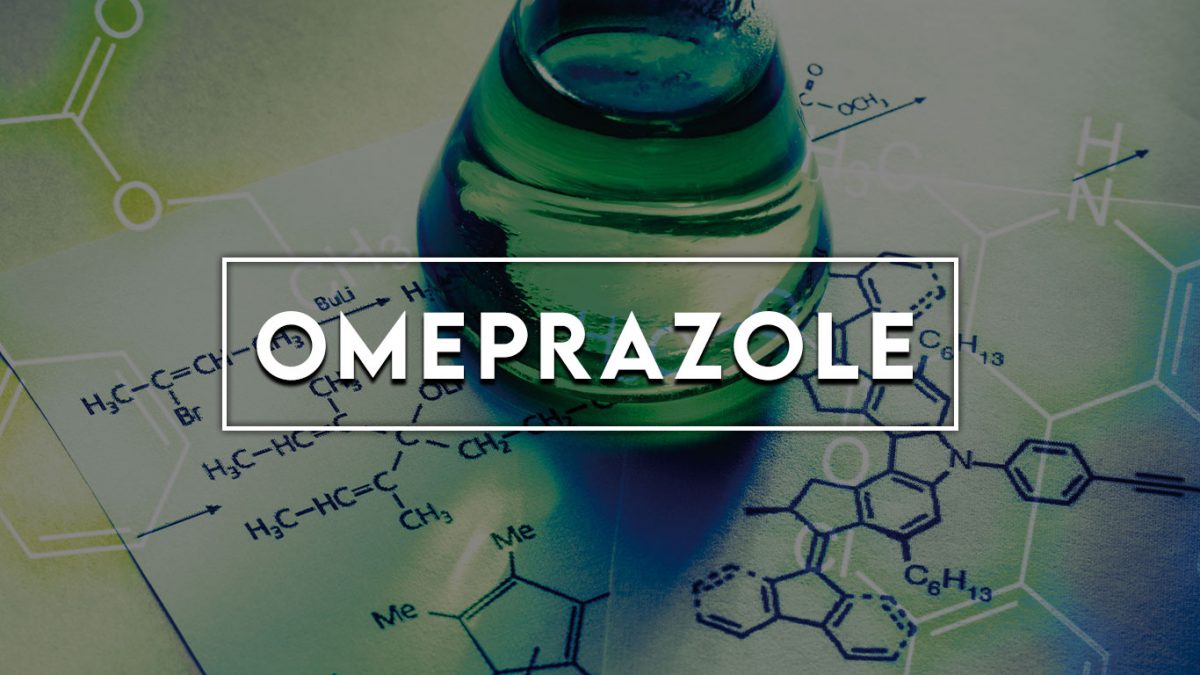Omeprazole
Omeprazole is a an oral antiulcer agent. Omeprazole is characterized as a gastric acid pump inhibitor because it blocks the final step of gastric acid production. It has a long duration of action and is very potent, allowing for once-daily administration. Despite its potency, it must be used in combination with antibiotics to be effective against Helicobacter pylori. Due to concern regarding long-term use, it was originally approved by the FDA in September 1989 for acute treatment only. In December 1994, an FDA advisory committee recommended it be approved for maintenance therapy of healed erosive esophagitis. In April 1996, it was approved for the treatment of H. pylori-associated duodenal ulcer. Belongs to a new class of ant secretory agents, the substituted benzimidazoles, which suppress gastric acid secretion by inhibiting the H+/K+ ATPase enzyme system of parietal cells. it, following activation in an acidic pH, binds irreversibly to the H+/K+ ATPase pump on the secretory surface of the parietal cell membrane. Subsequently, the secretion of hydrogen ions into the gastric lumen is inhibited. it inhibits both basal and stimulus-induced acid secretion.
Primary Characteristics
Omeprazole is also known as Proton pump Inhibitor. It is of Synthetic origin and belongs to Benzimidazol. It belongs to H/K At pase proton pump inhibitor pharmacological group on the basis of mechanism of action and also classified in Antacids pharmacological group. The Molecular Weight of Omeprazole is 345.40.
Its pKa is 4.0, 8.7.
Indications
Omeprazole is primarily indicated in conditions like Acid reflux disease (long-term management), Benign gastric and duodenal ulceration, Benign gastric and duodenal ulcers, Benign gastric ulcer associated with H.pylori, Duodenal errosions, Duodenal or benign gastric ulcer associated with H.pylori, Duodenal ulcer, Duodenal ulcer associated with h. Pylori, Gastric acid reduction during anaesthesia, Gastric acid reduction during general anesthesia, Gastric ulcer, Gastro-esophageal reflux disease, Gastro-o esophageal reflux disease, Gastro-esophageal reflux disease (refractory to other treatment), Maintenance of recurrent duodenal ulcers, Non-ulcer dyspepsia, NSAID-associated gastric and duodenal ulcers, NSAID-associated gastric and duodenal ulcers (prophylaxis), NSAID-associated gastric and duodenal ulcers and duodenal erosions, NSAID-associated gastric or duodenal ulcers, NSAID-associated gastric or duodenal ulcers (prophylaxis), Prevention of relapse in duodenal ulcer, Prophylaxis for NSAID-associated gastric and duodenal ulcers, Prophylaxis of acid aspiration, Reflux esophagitis, Resistant ulcers, Severe or recurrent duodenal and gastric ulceration, Zollinger-Ellison syndrome, and can also be given in adjunctive therapy as an alternative drug of choice in Acid aspiration syndrome prevention, GI bleeding.
Pharmacokinetics
Oral absorption of Omeprazole is found to be 57.5% ±7.5. Volume of distribution is found to be 0.3 – 0.4 l/kg and plasma proteins binding is 95%. Pre systemic metabolism is noted to be 20% and metabolism is reported Hepatic. Renal Excretion accounts for 80% and plasma half life is 1 hr.
Mechanism of action
Hydrochloric acid (HCl) secretion into the gastric lumen is a process regulated mainly by the H(+)/K(+)-ATPase of the proton pump , expressed in high quantities by the parietal cells of the stomach. ATPase is an enzyme on the parietal cell membrane that facilitates hydrogen and potassium exchange through the cell, which normally results in the extrusion of potassium and formation of HCl (gastric acid) .
Omeprazole is a member of a class of anti secretory compounds, the substituted benzimidazoles, that stop gastric acid secretion by selective inhibition of the H+/K+ ATPase enzyme system. Proton-pump inhibitors such as omeprazole bind covalently to cysteine residues via disulfide bridges on the alpha subunit of the H+/K+ ATPase pump, inhibiting gastric acid secretion for up to 36 hours . This anti secretory effect is dose-related and leads to the inhibition of both basal and stimulated acid secretion, regardless of the stimulus .
Mechanism of H. pylori eradication
Peptic ulcer disease (PUD) is frequently associated with Helicobacter pylori bacterial infection (NSAIDs) . The treatment of H. pylori infection may include the addition of omeprazole or other proton pump inhibitors as part of the treatment regimen. H. pylori replicates most effectively at a neutral pH . Acid inhibition in H. pylori eradication therapy, including proton-pump inhibitors such as omeprazole, raises gastric pH, discouraging the growth of Pylori . It is generally believed that proton pump inhibitors inhibit the urease enzyme, which increases the pathogenesis of H. pylori in gastric-acid related conditions .
Side Effects
The severe or irreversible adverse effects of Omeprazole, which give rise to further complications include Interstitial nephritis.
Omeprazole produces potentially life-threatening effects which include Anaphylaxis. which are responsible for the discontinuation of Omeprazole therapy.
The signs and symptoms that are produced after the acute over dosage of Omeprazole include Tachycardia, Drowsiness, Drowsiness, Headache.
The symptomatic adverse reactions produced by Omeprazole are more or less tolerable and if they become severe, they can be treated symptomatically, these include Flatulence, Dizziness, Headache, Fatigue, Nausea, Diarrhea, Myalgia, Constipation, Insomnia, Abdominal pain, Dry mouth, Urticaria, Pruritus, Photosensitivity, Skin rash, Impotence, Depression, Arthralgia, Myopathy, Gynecomastia, Agitation, Dry mouth, dizziness.

